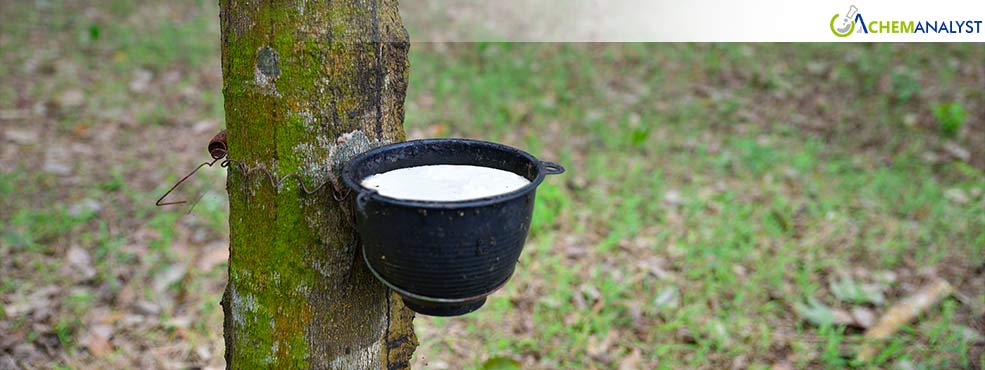Welcome To ChemAnalyst

Natural rubber, a vital raw material for many industries such as tire production, auto parts, medical devices, and building materials, has seen significant price swings during April 2025. The key material, prized for its elasticity, toughness, and tensile strength, is a linchpin of supply chains and manufacturing worldwide. Natural rubber prices indicate stabilization after April fluctuations; analysts expect a recovery during May even after sharp falls in primary producing countries.
Supply information indicates Vietnam shipped around 102,000 tons of natural rubber during the initial two months of 2025, which is a year-on-year decline. Vietnamese exports of natural rubber to China alone fell by about 17-18% against the same period last year.
Concurrently, Thailand, a leading natural rubber-producing country, expects about 3% increase in production to 4.93 million tons in 2025 from 4.79 million tons in 2024. Regional increases in production differ, with the north increasing by 2.4%, northeast by 1.4%, the center by 1%, and south by 4%.
The natural rubber price fluctuations stem primarily from shifting supply-demand relationships. As major Asian producers like Thailand and Indonesia enter their harvest season, natural rubber supply is gradually improving after the traditional low-production period. Industry experts note that rubber crops typically experience reduced output between February and May before entering peak harvesting through September.
Downward pressure on natural rubber prices is being caused by the shift from low to high production cycles both locally and globally; however, this is being partially offset by firm downstream demand.
Inventory positions of natural rubber have reported marginal fluctuations in the month of April. On April-end, total natural rubber inventory in Qingdao's bonded and general trade areas stood at 0.61 million tons, marginally more than that of March-end. The continually elevated inventory levels keep the natural rubber market sentiment in bearish mode.
Downstream manufacturing numbers of tires are key to understanding natural rubber demand trends. Domestic enterprises' semi-steel tire operating loads stayed constant up to the end of April, while Shandong Province's all-steel tire output fell marginally.
Natural rubber prices are also hindered by other headwinds of global trade uncertainties, producing a wary mood among consumers. Buyers report thin inquiries and a robust wait-and-see strategy, even as natural rubber is a critical input in production supply chains.
Chinese production areas are also impacting market dynamics, with Yunnan Province already initiating rubber tapping activities. The combined rise in domestic and foreign natural rubber raw material supply is likely to sustain moderate pressure on prices up to early May.
Adequate rainfall predictions for major growing areas in 2025 will favor natural rubber production, with forecasters predicting a lower likelihood of leaf fall disease in rubber trees. Favorable conditions will increase per-unit yields, which could counteract effects from minor declines in the harvesting area.
Weather conditions during April have been largely favorable in key production areas, supporting the progressive rise in natural rubber harvesting activities following the customary low season.
While natural rubber prices have stabilized as of April's end, market fundamentals point towards sustained measured growth through May. The pairing of sufficient downstream demand from the tire industry and the transitional period of supply will most likely lead to modest but consistent price appreciation for natural rubber in the weeks ahead.
We use cookies to deliver the best possible experience on our website. To learn more, visit our Privacy Policy. By continuing to use this site or by closing this box, you consent to our use of cookies. More info.
